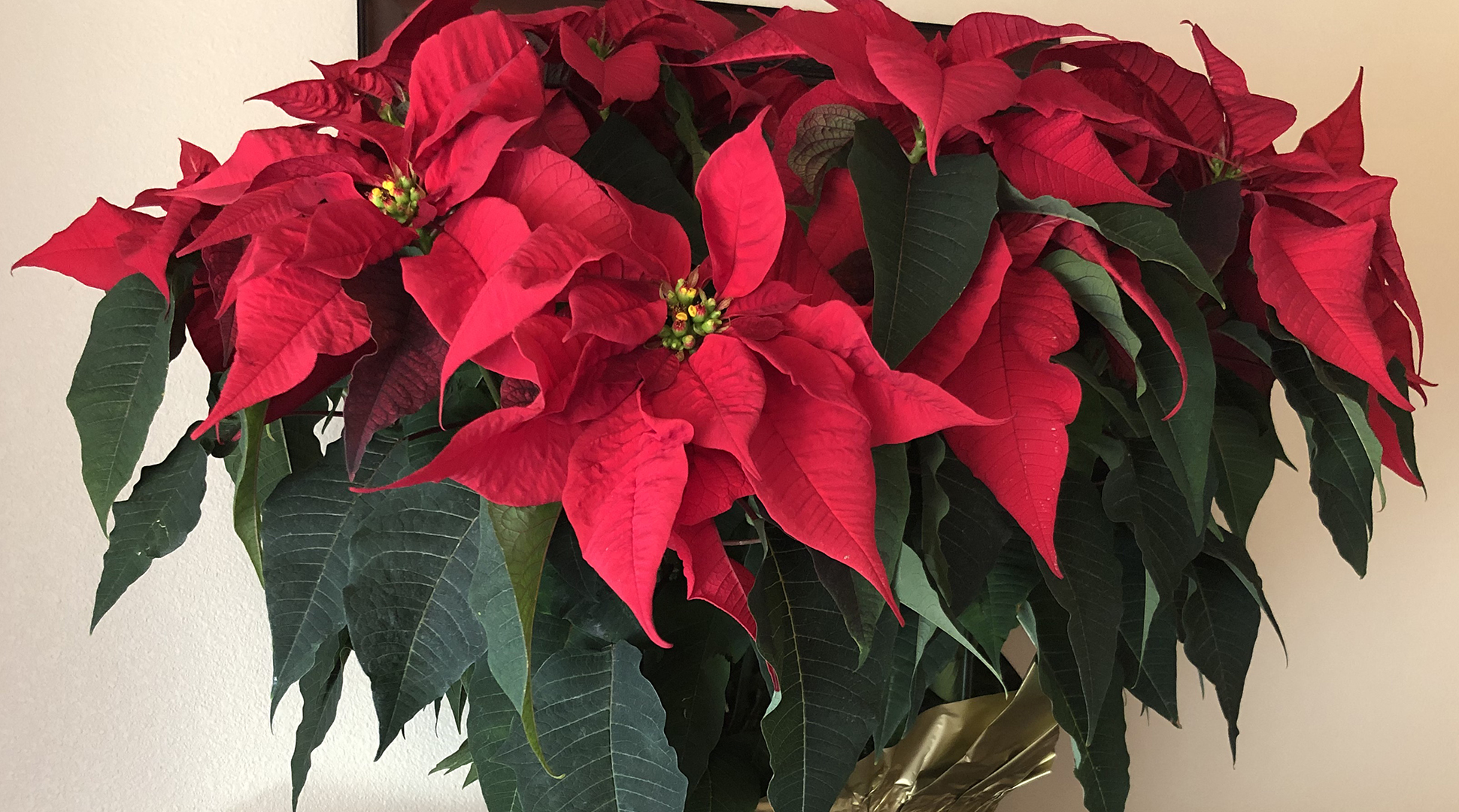Photo by Esther McGinnis
Esther McGinnis, Horticulturist, NDSU Extension
Tis the season to be decorating for the holidays.
Colorful poinsettias, holly plants with spine-tipped leaves and fast-growing amaryllis bulbs brighten our homes.
Anytime that I mention poinsettias, the question arises as to their toxicity to people and pets. People widely assume that this popular holiday plant is incredibly poisonous.
Poinsettia’s reputation as a fatal beauty stems from the unconfirmed 1919 death of a 2-year-old in Hawaii. The unlucky toddler was widely believed to have nibbled on a single leaf. Thus, a longstanding old wives’ tale was born.
In 1971, Ohio State University researchers sought to determine the plant’s toxicity level by feeding rats a highly concentrated solution made from ground-up poinsettia parts. The solution was the equivalent of feeding 500 leaves to a 50-pound child. Despite the highly potent solution, not a single rat died. In fact, the rats did not get sick at all and continued to have normal appetites.
While poinsettias are not highly toxic, consuming leaves can cause mild digestive upset in children and pets. In addition, the milky sap can cause skin irritation for those individuals allergic to latex. Poinsettia is related to the para rubber tree, a natural source of latex rubber.
Fortunately, the awful taste and the sticky sap of poinsettia leaves deter most individuals from consuming large quantities. However, if you are concerned about your overly curious toddler or pet, your best course of action is to put the plant out of reach.
Of more concern is the plant called Jerusalem cherry. This member of the nightshade family is deceptive because the attractive orange to red fruits look like cherry tomatoes. Even small amounts can be dangerous, particularly to children and pets.
What about holly and mistletoe? Statements about these plants are complicated because more than one species of holly and mistletoe is sold in the nursery trade. In general, holly and mistletoe are toxic and the risk is commensurate with the amount consumed and the individual’s size.
Studies show that consuming as few as a handful of holly berries can cause severe vomiting in children. Deaths have been reported due to mistletoe consumption, but these reports are primarily linked to the brewing of “herbal teas” from the leaves and berries.
Finally, flowering bulbs such as amaryllis may present a risk. Children may be attracted to the enormous bulbs because they resemble an onion. Dogs and cats also should be kept away from amaryllis.
If you are looking for holiday plants that are not toxic to humans and pets, consider Christmas cactus or Norfolk pine.
This article is not meant to scare you from purchasing holiday plants. Instead, use common sense. Know what plants you have and do a little research. Supervise children and teach them not to eat houseplants. Be aware that even nontoxic plants can be choking hazards.
For more information on toxic plants, see the following websites:
- National Capital Poison Center: https://www.poison.org/articles/plant
- American Society for the Prevention of Cruelty to Animals list of toxic and nontoxic plants for dogs, cats and horses: https://www.aspca.org/pet-care/animal-poison-control/toxic-and-non-toxic-plants
Happy holidays!
